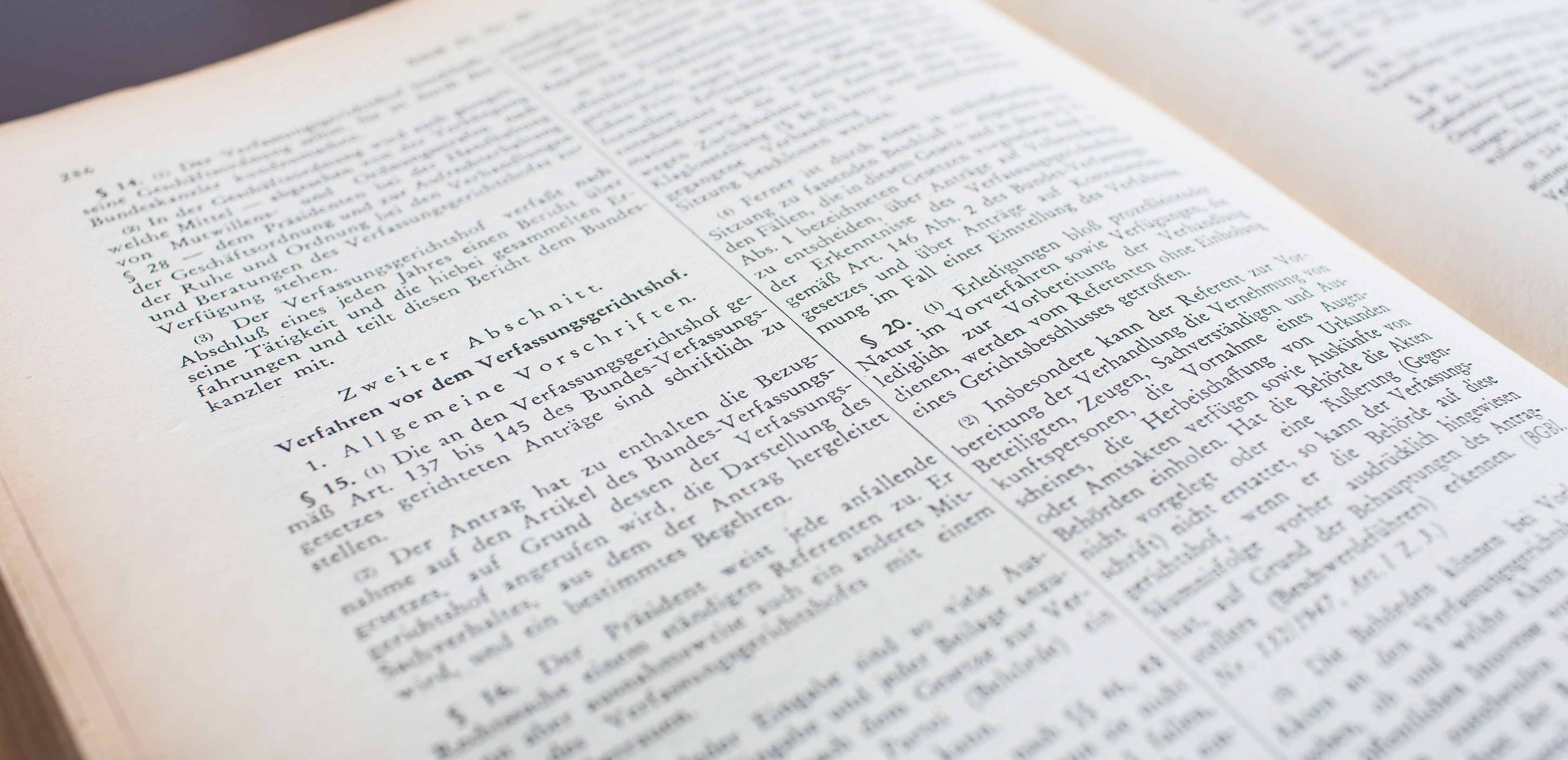Proceedings before the Constitutional Court – The Decision Process
Commencement of proceedings
All proceedings before the Constitutional Court are initiated through the filing of “introductory pleadings” which, depending on the type of proceedings, may be called a “complaint” (Art. 144 B-VG), an “application” (in particular Art. 138 to 140a B-VG), a “legal action” (Art. 137 B-VG), a “challenge to elections” (Art. 141 B-VG) or a “law suit” (Art. 142 and 143 B-VG).
With few exceptions (for territorial authorities and their bodies, as well as in electoral proceedings), applications have to be filed by a lawyer provided with a power of attorney. Low-income applicants may apply for the provision of legal counsel free of charge (Legal Aid).
Every incoming case is given a file number and is assigned by the President to a Permanent Reporter – or, in exceptional circumstances, to another member of the Court – who will work on the case and prepare the decision. When assigning cases, the President is not bound by any procedural rules; in practice, however, a division by fields of law (e.g. trade law, real estate transfer law, tax law, social security law, electoral law), taking into account the specific experience of the Permanent Reporters and a fair distribution of the work load, has proved it merits.
Preliminary proceedings and preparation of the judgment
Having been assigned a case, the Permanent Reporter first examines the requirements of admissibility, such as the power of the Constitutional Court to deal with the case, the timeliness of the submission and the entitlement of the applicant to submit a case to the Court, as well as compliance with the formal legal requirements. Submissions that do not meet the formal requirements are returned to the applicant for correction within the prescribed period of time, provided the deficiency can be corrected (e.g. lawyer’s signature missing or contested ruling not enclosed).
If an application for legal aid or – in the case of a complaint – for temporary relief (suspensive effect) has been submitted, the decision thereon is usually taken at this stage of the proceedings.
If the Permanent Reporter considers a submission (application, complaint, law suit, etc.) to be inadmissible or inherently flawed, he/she prepares a draft decision to reject the application. If he/she regards a complaint as manifestly unsuited for further consideration, because it has no chance of success or does not serve to clarify a constitutional issue, he/she proposes that the Court dismiss the case (Art. 144 para. 2 B-VG). In all other cases, the Permanent Reporter invites the opposing party – in complaint proceedings pursuant to Art. 144 B-VG this would be the authority that decided in the original administrative proceedings; in judicial review proceedings it would be the federal government or the provincial government concerned – as well as any other party involved to submit their statements of defence, requests the presentation of the complete case file for study and, if necessary, takes further steps to clarify the facts (e.g. hearing of witnesses, request for documents and additional statements….).
Subsequently, following a study of case law relevant to the decision and the related legal literature, a draft decision is elaborated. Together with all essential documents, this draft is communicated to all members of the Court.
If the Permanent Reporter considers a public hearing to be necessary or appropriate, he/she informs the President thereof.
The hearing
Although, in principle, the Constitutional Court renders its judgments after a public oral hearing, it may refrain from doing so. In general, public oral hearings are only held to obtain further clarification of the facts or to discuss the remaining open legal issues. It is incumbent upon the President to require that a public oral hearing be held.
The parties to the proceedings are summoned to the hearing; the date of the hearing also has to be posted on the official bulletin board and published on the Federal Electronic Announcement and Information Platform (EVI). In many cases, questions to which the Constitutional Court requires answers from the parties are specified in the summons.
The hearing begins with a presentation by the Permanent Reporter, giving an overview of the facts, the legal situation and the positions taken by the parties. After the presentation, the parties are heard. The judges then put (additional) questions, if necessary. Once the case has been discussed in sufficient detail, the President closes the hearing and announces whether the decision will be pronounced orally or communicated in writing.
Deliberations and judgment
The Constitutional Court holds its deliberations behind closed doors. The deliberations begin with the presentation of the draft decision by the Permanent Reporter. This is followed by a discussion, which may be suspended for the purpose of clarification or the elaboration of alternatives. Once the case has been sufficiently discussed, a vote is taken on the Permanent Reporter’s proposal. If necessary, the Court may vote step by step. Based on the result of the deliberations, the ruling is laid down in writing, usually by the Permanent Reporter, sometimes by another member of the Court. The chairperson verifies whether the written version duly reflects the decisions taken. Judgments of major significance are often pronounced orally.

